
The Mummies of Guanajuato: A Must-See Spectacle of History
The Mummies of Guanajuato: A Must-See Spectacle of History
Before entering the mystery of the mummies of Guanajuato, it might be a good idea to read this guide to get the most out of your visit to this special and spooky gallery.
This peculiar Mexican museum is a collection of naturally mummified bodies exhumed from the Santa Paula Cemetery in Guanajuato since the 19th century.
There’s a total of 111 mummies, including adults and children. The museum has become one of the most interesting tourist sites in the city of Guanajuato.
What city are the Mummies of Guanajuato in?
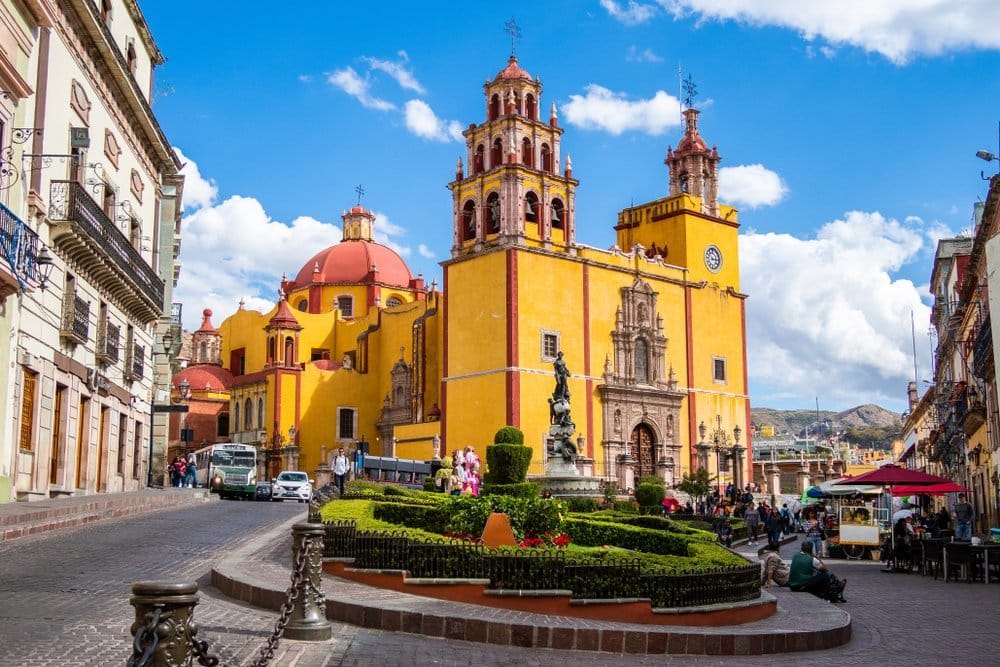
The mummies of Guanajuato are located on the esplanade of the Municipal Cemetery in the center of Guanajuato city.
There are two ways to get to Guanajuato:
On the one hand, you can arrive by air at its International Airport, only 40 minutes from the capital city.
There are different routes by plane from key cities in Mexico, such as Mexico City, Monterrey, and Guadalajara.
From these destinations, you can buy a flight to Guanajuato and enjoy the activities of this Heritage City!
You can also get there by road
On the other hand, it is easy to get to Guanajuato City by land since many bus lines have it as a destination for an average price of 500 to 800 pesos.
It is a comfortable option if you don’t like to drive and prefer to relax before a few days of activities in Guanajuato.
You can also enjoy the beautiful natural views that the buses pass through.
Finally, if driving is your thing, you can access this destination by taking the Mexico-Queretaro-Guanajuato highway, where you will pay approximately 400 pesos at toll booths departing from CDMX.
Consider expenses such as gas and toll booths, of course, if necessary.
A moment on the road is also special if you go with good company, as the car will be the site of conversations and laughter along the way.
There are no excuses not to go to Guanajuato, Mexico’s Heritage City.
How did the Mummies of the Guanajuato Museum begin?
Back in the day, in some Mexican cities, a five-year term fee was required to keep the remains in the cemetery.
When the bodies accumulated and no family or friends were responsible for their maintenance, the remains were exhumed and relocated.
On June 9, 1865, during the exhumation of Remigio Leroy (the first mummy in the museum), the gravediggers were astonished to see that the body was magnificently mummified.
Who was Remigio Leroy?
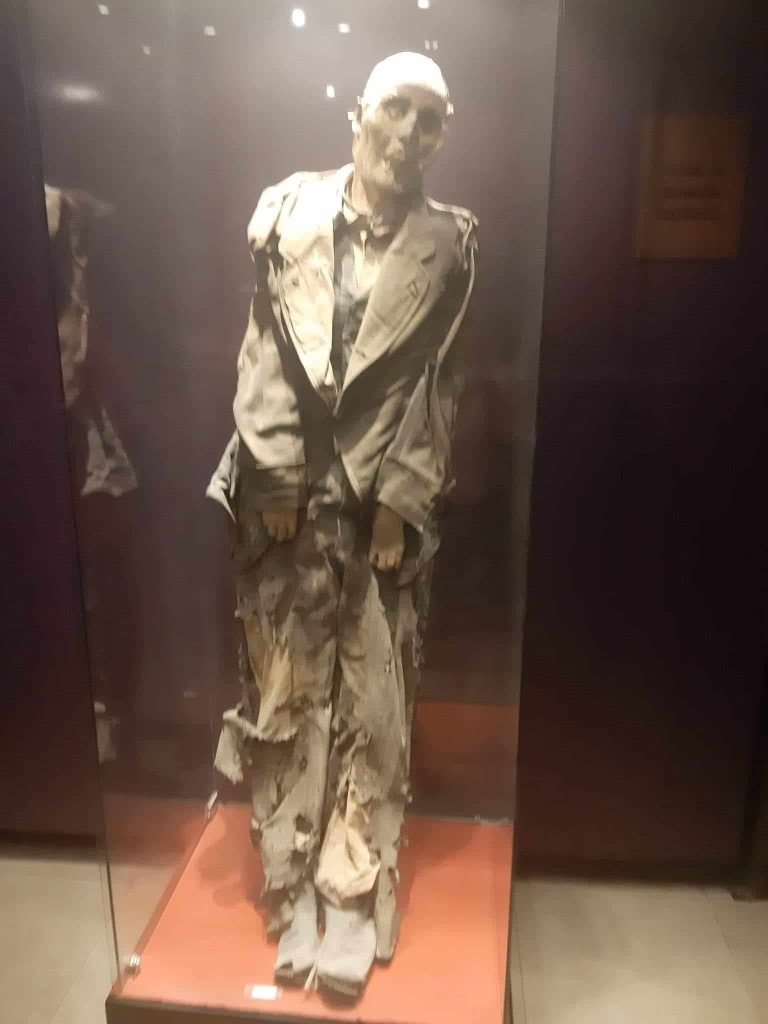
Leroy was a French physician who settled in Guanajuato during the 19th century.
He died in 1860, buried in niche N° 214 of the Santa Paula cemetery.
In 1865, when the inventory of the forgotten bodies was made, whose relatives were not up to date with the maintenance fee, Leroy was exhumed.
Now the mummy of Remigio Leroy is one of the most popular in the museum because he is considered the founder.
Other identified mummies:
The mummies of Ignacia Aguilar, Tranquilina Ramírez, and Andrea Campos Galván are identified by name and surname.
There are also mummified bodies that have received colloquial or funny names.
Such as Daniel el Travieso (Dennis the menace), Los Angelitos, and La Bruja (the witch), a mummy attributed to a woman who theoretically died at an advanced age.
How did mummification occur?
Natural mummification can occur under particular conditions when the characteristics of temperature, humidity, soil structure, and permeability of the soil layer allow it.
These conditions allow the body to lose its liquid components before the germs continue the putrefaction process.
A dry and cold environment is required for mummification and preservation.
Did the Mummies of Guanajuato begin at its current location?

No. After the mummified bodies of Dr. Remigio Leroy and a few others were removed, the news caused a stir in Guanajuato and the surrounding area.
The cemetery administration had taken the precaution of placing the mummies in the catacombs, and people started coming to the cemetery to see them, which could be done in the company of the gravediggers.
The mummies were seen in the cemetery catacombs, where not many people could enter and which, of course, did not have the facilities for a proper exhibition.
In 1969 the museum was opened, which survived with many shortcomings until it was reopened in 2007 after a complete modification executed by the municipal government of Guanajuato.
The mummies became known throughout Mexico in the early 1970s with the blockbuster movie El Santo vs. Las Momias starring the famous Mexican actor and wrestler Santo the Silver Masked.
Is it true that some bodies were embalmed?
Investigations carried out by Mexican and American experts established that the bodies of a 24-week-old fetus and a young child were embalmed.
The specialists observed that both bodies had their brains and organs removed.
Presumably, the corpses would be better preserved before burial, allowing more time for the customary funeral rites to be performed.
Horror stories about the mummies:
Apart from the stories of television and movies, there are some strange facts about some mummies that question situations between reality and myths.
There is a legend that a mummified woman could have been buried alive, and the supporters of the gloomy hypothesis base themselves on a clue.
The body was not left with her hands together in prayer position, as was usual, but with her arms above her head as if she had been trying to lift the lid of the coffin.
Was any of the mummies of Guanajuato murdered?
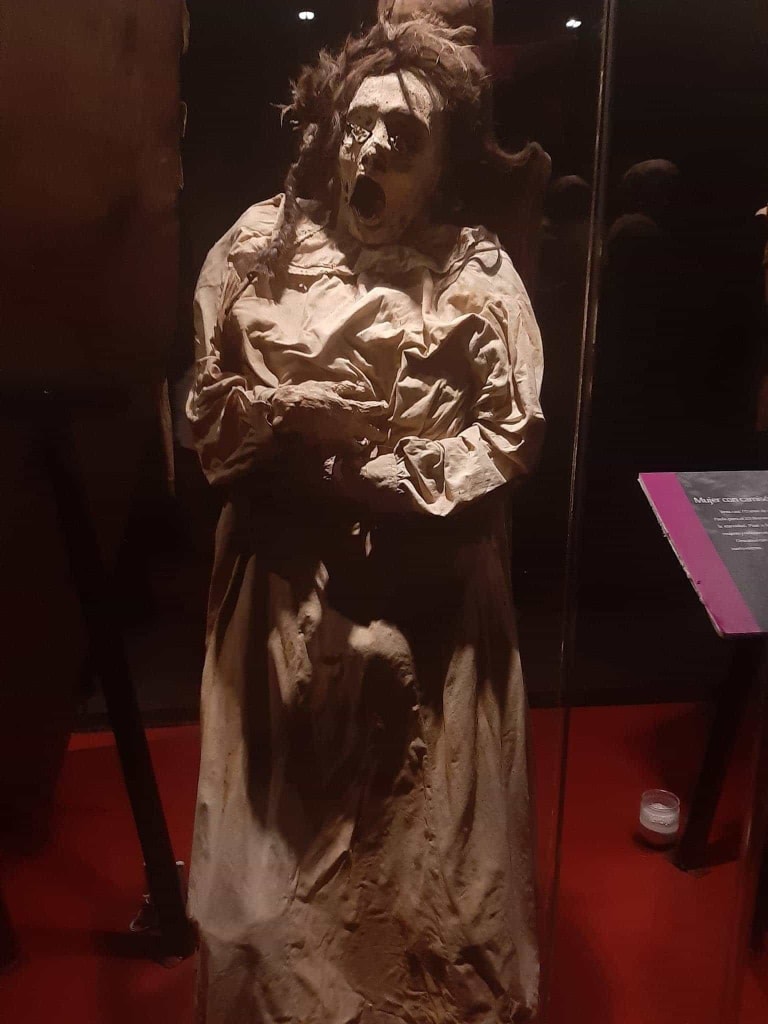
There is the mummy of a young man who shows signs of having received a heavy blow on the side of the head.
Legend has it that it is the mummy of a murdered man, but there is no conclusive evidence.
Another legend states that a woman was hanged to death (the story has even been expanded, saying that her husband hung her), but there is no definitive evidence either.
One of the museum’s goals is to dignify the mummified bodies, gathering as much information as possible, eventually leading to identifications.
Experts in forensic medicine and anthropology, national and foreign, apply the most modern techniques to establish a profile of each mummy.
These include the cause of death, approximate age, social environment, and facial reconstruction.
Guanajuato Mummies Museum: What to expect

Apart from seeing the mummies, you will find written explanations, audio, and video to get as much information as possible about this exciting museum.
The visit begins in a projection room where an introductory video about the museum is shown.
Another room reconstructs how mummified bodies were exhibited since the 19th century.
Then follows the Voice of the Dead room, the Imaging room, and the rooms dedicated to the other mummies, with their relevant particularities.
In the Voice of the Dead, some of the most important representatives of the collection tell their own stories, moments that give some visitors goosebumps.
In the Imaging room, the main conclusions of the research carried out on the mummified bodies of a man and a woman are shown.
What stands out in the exhibition rooms?
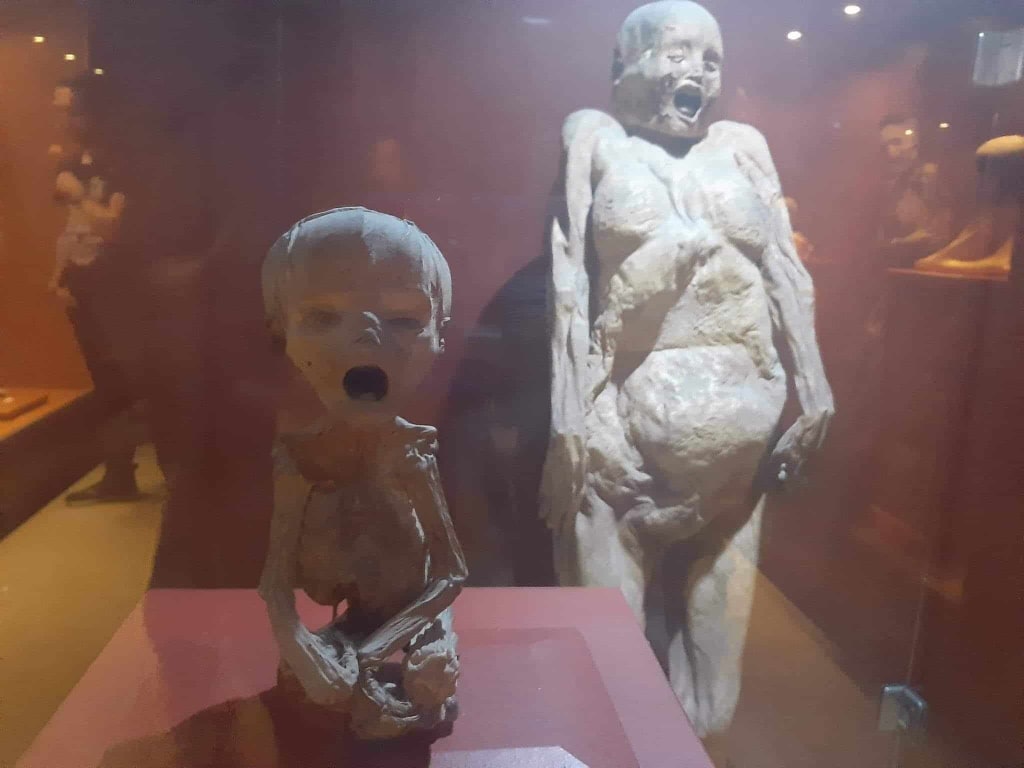
- In the area called Angelitos (Little Angels), mummies of babies dressed in the traditional manner of dead children, called “angelitos” in Spanish America, are exhibited
- In the room dedicated to Tragic Deaths are mummies corresponding to people supposedly killed in tragic events
- The room of Typical Dresses corresponds to the mummies of people who were dressed in traditional clothes for their burial
- In the “Mother and Child” area, there is one of the most important pieces in the museum, since it contains the fetus, which is the mummified body of the youngest age in the world
There is also a reconstruction of the cemetery niches from which the mummies were exhumed.
The international world of science and media has shown a growing interest in the museum.
Apart from the world experts in forensic medicine and anthropology who have the museum as an object of study, television documentaries have been produced, and some films have shown the mummies.
Among the documentaries, it is worth mentioning one made by the magazine and television channel National Geographic.
The famous American director Tim Burton visited the museum.
How much is the entrance to the Mummy Museum Guanajuato?
The regular entrance fee to the mummy museum is 55 pesos.
The museum is open from Monday to Thursday from 9:00 to 18:00 and Friday to Sunday between 9:00 and 18:30.
There are preferential prices for seniors with official ID, Guanajuato residents with official ID, children from 6 to 12 years old, students and teachers with valid IDs, and people with disabilities.
The right to use photographic or video cameras costs 20 pesos.
Mummies of Guanajuato summary: 10 quick facts
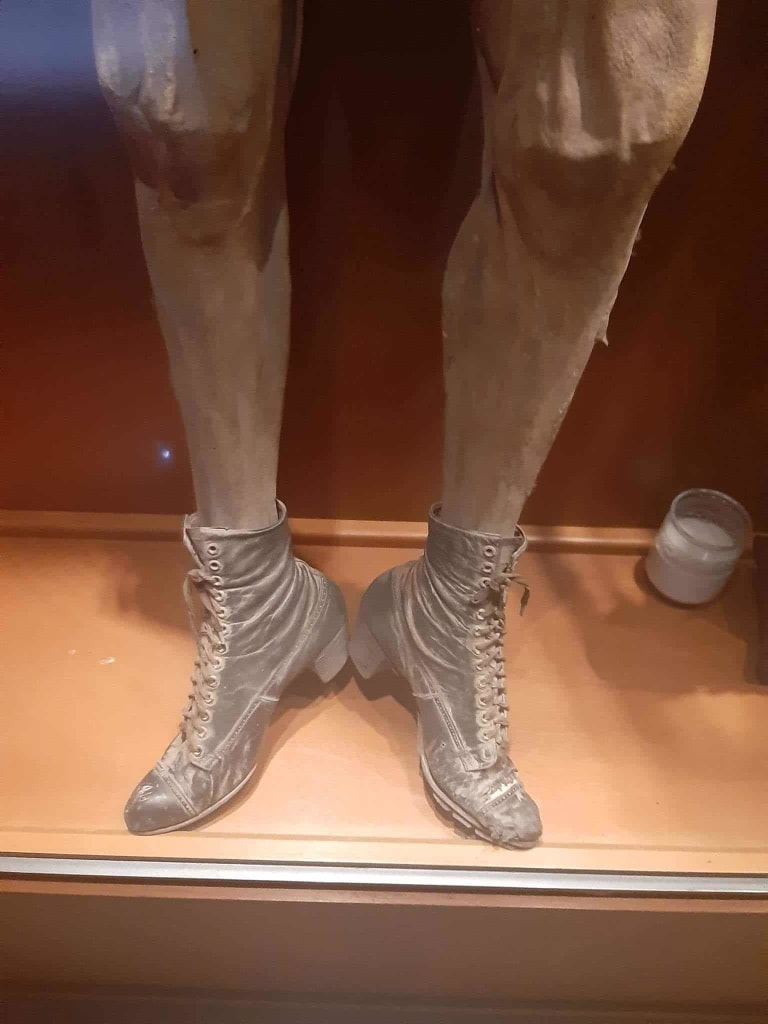
As you have seen, the mummies are an icon of Guanajuato; recognized through their history, movies, and legends, which have made them a cultural reference of the state.
- It is considered the largest collection of natural mummies in the world, with more than 100 elements
- The mummies of Guanajuato are considered cultural heritage of the Municipality of Guanajuato
- The antiquity of the remains in the museum varies between the end of the XIX century and the XX century
- The first mummy was discovered in 1865; it is about the Frenchman Remigio Leroy, who died at the age of 50
- The museum is located in what used to be the catacombs of the Santa Paula Cemetery
- According to the narrations of the chroniclers, the bodies that are exhibited belong to people whose relatives did not pay the rights of perpetuity
- The mummies of Guanajuato are natural since it was the weather conditions and chemical properties of the subsoil that caused the dehydration of the bodies before their decomposition process. Without human intervention
- Here is one of the smallest mummies in the world; a small fetus of 8 months of gestation that died with its mother
- The mummies have left the museum to be exhibited in important museums in the United States and Europe
- They have been part of the Mexican cinema in the movies: “El Santo vs Las Momias de Guanajuato” and “The Legends of the Mummies of Guanajuato”